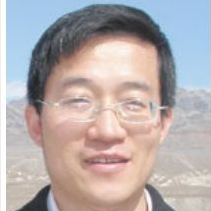Remote Sensing of Urban Impervious Surfaces: Mapping, Monitoring, and Modeling the Dynamics of Urban Impervious Surfaces with Multisource Remote Sensing Data
A special issue of Remote Sensing (ISSN 2072-4292). This special issue belongs to the section "Urban Remote Sensing".
Deadline for manuscript submissions: closed (20 May 2022) | Viewed by 27378
Special Issue Editors
Interests: spectral unmixing analysis; environmental planning; land use and land cover change modelling
Special Issues, Collections and Topics in MDPI journals
Interests: remote sensing; spatial modeling; population; urban analysis; spatial epidemiology
Special Issues, Collections and Topics in MDPI journals
Special Issue Information
Dear Colleagues,
Impervious surfaces, a major component of urbanized areas, have concurrently increased with rapid urbanization. Urban impervious surfaces have been widely considered as an important index for analyzing urban growth patterns and quantifying the development of urban and suburban areas. Meanwhile, urban impervious surface has been widely applied in the corresponding physical and socio-economic fields, such as urban hydrology study, urban heat island effect, population estimation, population distribution pattern analysis, and its impact on housing prices. Considering the important role that urban impervious surfaces play, the accurate estimation and dynamic monitoring of impervious surfaces have become essential.
The availability of multisource remote sensing data, such as LiDAR, SAR, hyperspectral, and UAV with diverse spectral, spatial, and temporal resolution provides a great opportunity for the comprehensive understanding of urban impervious surfaces. This Special Issue focuses on new techniques for mapping, monitoring, and modeling urban impervious surfaces. Moreover, we are also interested in studies investigating the impact of urban impervious surfaces on the urban environment. Please find the main topics below (but papers need not be limited to this list):
- Urban impervious surfaces estimation and change analysis
- Applications of new sensors, such as LiDAR, SAR, UAV in urban impervious surfaces analysis
- New innovative algorithms in modeling urban impervious surfaces
- Evaluation of the impact of urban impervious surfaces on the environment
- Multisource remote sensing fusion for monitoring urban impervious surfaces
Prof. Dr. Changshan Wu
Guest Editors
Manuscript Submission Information
Manuscripts should be submitted online at www.mdpi.com by registering and logging in to this website. Once you are registered, click here to go to the submission form. Manuscripts can be submitted until the deadline. All submissions that pass pre-check are peer-reviewed. Accepted papers will be published continuously in the journal (as soon as accepted) and will be listed together on the special issue website. Research articles, review articles as well as short communications are invited. For planned papers, a title and short abstract (about 100 words) can be sent to the Editorial Office for announcement on this website.
Submitted manuscripts should not have been published previously, nor be under consideration for publication elsewhere (except conference proceedings papers). All manuscripts are thoroughly refereed through a single-blind peer-review process. A guide for authors and other relevant information for submission of manuscripts is available on the Instructions for Authors page. Remote Sensing is an international peer-reviewed open access semimonthly journal published by MDPI.
Please visit the Instructions for Authors page before submitting a manuscript. The Article Processing Charge (APC) for publication in this open access journal is 2700 CHF (Swiss Francs). Submitted papers should be well formatted and use good English. Authors may use MDPI's English editing service prior to publication or during author revisions.
Keywords
- Remote sensing
- Urban impervious surfaces
- Physical and socio-economic applications
- Multisource remote sensing
- Image processing algorithm
- Urban impervious surfaces change analysis






